Best Corneal treatment
- Affordable and best corneal treatment by the top-rated eye surgeons
- Online consultation for corneal related issues
- Know about the Cornea Transplant Surgery Procedure and Cost.
What Is The Cornea?
The outer part of the eye is called Cornea. It is one of the fundamental components of the human eye as it allows the light to enter into the eye so that a person can have a clear vision.
Myopia, hyperopia, and astigmatism are a few refractive problems that people commonly face due to disorders in their cornea. They are produced due to a change in the shape of the cornea. A Corneal Surgery is recommended when the cornea of the eye turns opaque.
Structure Of The Cornea

There are five components of the cornea which have different functions:
Epithelium
It is the outer layer of the cornea. This means that whatever object that has to come in contact with the eye first has to touch the epithelium. It is formed up of renewal cells that habitually shed and keep rebuilding from time to time.
Bowman’s Layer
It guards the eye and is also known as an anterior limiting membrane. It is formed up by fibers which are known as collagen. It is a strong layer that is among the epithelium and the corneal stroma and is made to preserve and protect the stroma.
Stroma
It includes essentially collagen fibrils and water along with interlinked keratocytes which are used for the repair and support of the cornea. There are 200 – 300 layers of collagen fibrils that are provided in a parallel manner, and this is the principal reason that allows the cornea to be completely transparent.
Descemet’s Membrane
It guards the eye against Infections. It is the 4th layer of the cornea which is very thin and still very effective as it assists in guarding the eye against all infections or injuries. It is also named as a posterior limiting membrane.
Endothelium
It manages the fluids and is the last layer of the cornea present in the inner part. It is made up of mitochondria-rich cells. Washed by aqueous humor, the endothelium’s main purpose is to hold a precise balance among the fluids flowing in and out of the cornea at every time. It is the layer that appears directly in touch with the iris and pupil of the eye.
Causes Of Corneal Diseases
Corneal disease can be a result of many factors:
- Infection from wearing contact lenses
- Trauma or injury
- Inflammation or distortion of the cornea from eye diseases.
- Corneal inflammation after an eye surgery procedure
- Corneal scarring
- Corneal Transplant Procedures
- Penetrating Keratoplasty (PK)

Types of Corneal treatments
Pterygium treatment
Pterygium is the thickening of outer eye tissue that gradually grows over the cornea, obstructing your sight. The cause is believed to be the sun’s ultraviolet rays or exposure to a dry and dusty environment. People in tropical climates and those who are exposed to the sun for extended periods may be at higher risk for developing pterygium. Signs of this growth of tissue include a lot of tearing, eye discoloration, redness, irritation, increased astigmatism, reduced vision, and distorted vision. It may also cause scarring of the eye.
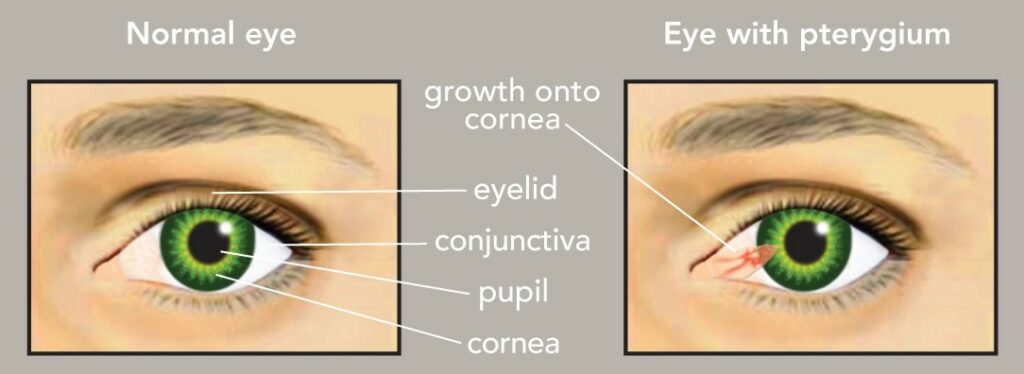
SK (Superficial Keratectomy)
SK is a procedure that is used to treat superficial ocular surface problems, such as recurrent corneal erosions and Anterior Basement Membrane Dystrophy (ABMD). Many ocular plain problems that cause damage to the most superficial layer of the cornea can be painful, and unfortunately, are often recurrent.
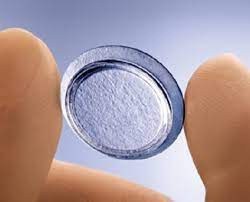
Penetrating Keratoplasty (PK)
If other less invasive treatment options do not work, Penetrating Keratoplasty (PK), may be performed as a last resort. It replaces the center of your natural, damaged cornea with a healthy tissue graft from a human donor. The surgical method is designed to restore vision loss you had experienced as a result of disease or injury.
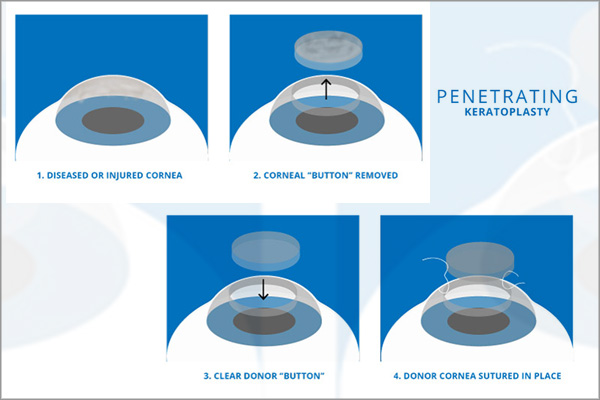
Descemet’s Stripping Endothelial Keratoplasty (DSEK)
Less invasive than PK, and often with shorter recovery time is a procedure known as DSEK or DMEK. In the procedure, the eye surgeon will replace only the fine endothelial layer of the cornea with an organ donor’s cornea. There is a lower chance of tissue rejection with these procedures because most of the natural cornea is left intact.
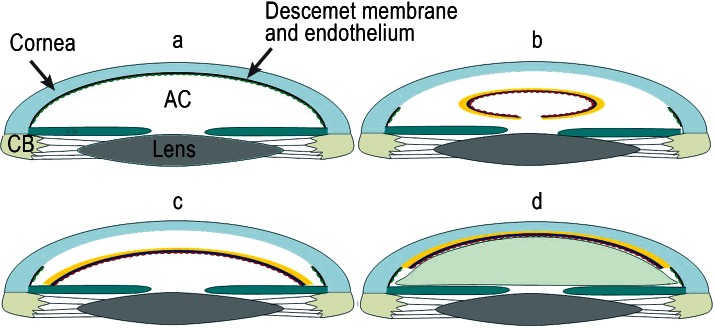
When Do You Need A Corneal Surgery?
A healthy, clear cornea is important for good vision. If your cornea is damaged due to eye disease or eye injury, it can become swollen, scarred, or misshapen and distort your vision.
A corneal surgery might be required in cases of conditions such as trichiasis, where eyelashes turn inwards and start rubbing against the surface of the eye, causing scarring and vision loss.
A cornea surgery may be required if eyeglasses or contact lenses cannot improve your functional vision, or if painful swelling can’t be relieved by medications or special contact lenses.
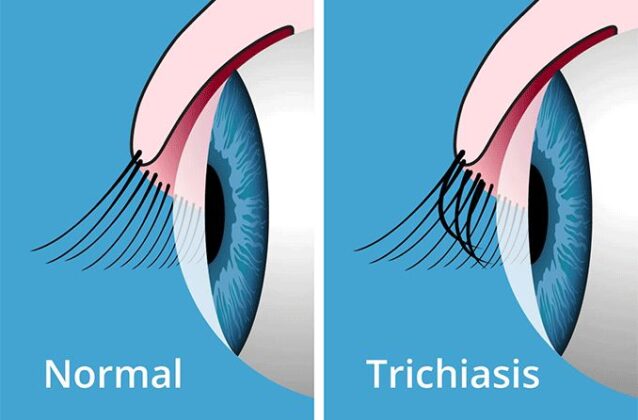
Few problems may affect your cornea and put you at a higher risk of corneal failure. These include:
- Scarring from infections, such as eye herpes or fungal keratitis.
- Scarring from trichiasis, when eyelashes grow inwardly, toward the eye, and rub against the cornea.
- Hereditary conditions such as Fuchs’ dystrophy.
- Eye diseases such as advanced keratoconus.
- Flattening of the cornea and irregular corneal shape
- Rare complications from LASIK surgery.
- Burns of the cornea or damage from an eye injury.
- Excessive swelling (edema) of the cornea.
- Graft rejection following a previous corneal transplant.
- Corneal failure due to cataract surgery complications.
Corneal transplant surgery procedure
Before cornea transplant surgery
- The first thing will be a thorough eye exam. Your eye doctor looks for conditions that may lead to complications post-surgery.
- Afterward, the doctor will take the measurements of your eye. Your eye doctor decides what size donor cornea you require.
- A review of all medications and supplements you’re taking will be done. You might need to stop taking certain medications or supplements pre or post your cornea transplant.
During the procedure
On the day of your surgery, you’ll be given a sedative to help you relax and a local anesthetic to numb your eye. You will not be asleep during the surgery but you should not feel any pain.
During the most frequent type of cornea transplant surgery (penetrating keratoplasty), a cut is made through the entire thickness of the cornea to remove a small disk of corneal tissue. An instrument called a trephine is used to make this small circular cut.
The donor cornea tissue is then placed in the opening. Your surgeon then uses a thin thread to stitch the new cornea into place.
After the procedure
Post your cornea transplant, you can expect to:
- Receive several medications, eyedrops, and, sometimes, oral medications immediately after cornea transplant and during recovery. This will help control infection, swelling, and pain.
- Wear an eye patch. An eye patch might protect your eye as it heals post-surgery.
- Return for frequent follow-up exams. Go for regular eye exams in which your doctor looks for complications in the first year after surgery.
Cost Of Cornea treatment
There are multiple procedures involved in the treatment of cornea. The estimated cost for the common cornea treatment procedures is shared below:
| Treatment | Cost (₹) |
|---|---|
| Foreign Body Removal Corneal | 2000-3000 |
| Corneal Ulcer Scrapping & Cauterisation | 2000-3000 |
| Penetrating Keratoplasty | 50000 – 60000 |
| C3R Corneal Collagen cross linking with Riboflavin | 40000 – 50000 |
Eye Mantra foundation provides free corneal treatment and transplant surgeries for the “underprivileged sections of society”. So anyone who is unable to afford the treatment expenses, can come to our hospital and get this cataract surgery done free of cost or at a very nominal price.
Best Cornea Treatment hospital
There are multiple good hospitals for cornea treatment in India including AIIMS, Sankara Nethralaya, LVPEI & Eye Mantra. At Eye Mantra Hospital, we deal with a lot of problematic corneal cases daily. We have skillful and specialized surgeons who are highly experienced in dealing with several diseases linked to the cornea. They know all of the precautions and methods to deal with eye problems and treat them in a simple, easy, and hygienic manner. Their priority is to inspect the overall medical condition of a person’s eye.
Eye Mantra Hospital is one among the few eye hospitals in the country that gives super-specialty eye services in Cornea.
We, at Eye Mantra Eye Centre, recognize the significance of the sense of vision for a fulfilled life and are dedicated to offering high-quality care for your eyesight. Our team of over 40 highly-trained ophthalmic surgeons has won appreciation from our patients and laurels from the industry for their unparalleled devotion to eye care.
Cornea Facilities
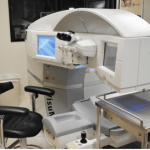
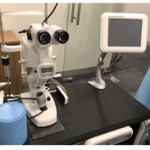


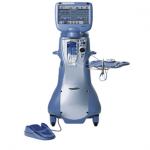


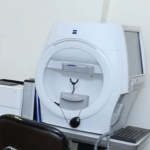
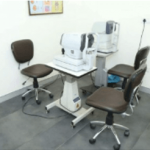
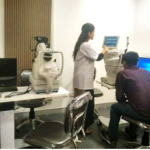
FAQ's
Generally, a corneal surgery takes an hour to get over but a person has to stay in the operating room for 2 hours for a postoperative examination.
90%. The overall completion rate of a corneal transplant is very noble using modern eye banking and surgical procedures. But, there are multiple determinants that determine the result.
For example, keratoconus has one of the largest prognoses for great vision with a greater than 90% chance of a clear graft.
A corneal transplant is performed as an outpatient method. Eye drops will be put in the patient’s eyes. The patient eye surgeon will practice either local or general anesthesia. So, the patient will not feel pain.
The specific conditions that can affect the clarity of one’s cornea are :
- Hereditary situations such as Fuchs’ dystrophy.
- Chemical burns of the cornea or injury to an eye.
- Extreme swelling on the edema of the cornea.
- Uncommon complications from LASIK surgery.
With its strength for fast repair, the cornea regularly heals after maximum injury or disease. Still, when there is widespread damage to the cornea, the healing procedure may be increased.
Some corneal transplants do last forever, but some demand to be replaced due to transplant refusal. That can occur even 20 years later. Due to the easy failure of the transplant’s new cells over time. It all depends on the age and health of the donor tissue, the warranty might simply run out.
Primarily, do not rub your eyes. Avoid strenuous exercise and heavy lifting during the first weeks after surgery. If you have a job that does not involve physical strain on your eyes and other parts of the body, you can return to work 2 to 3 weeks after surgery.
There are multiple good cornea doctors in India. Eye Mantra has some of the top Cornea doctors / surgeons. Dr. Shweta Jain is one of the best Cornea specialists in India. Dr. Shweta Jain has successfully performed more than 1000+ Cornea treatments so far. The results from the Eye Mantra Cornea surgery program turns out to be better for many people. Post Cornea surgery, Improved vision and depth perception.



